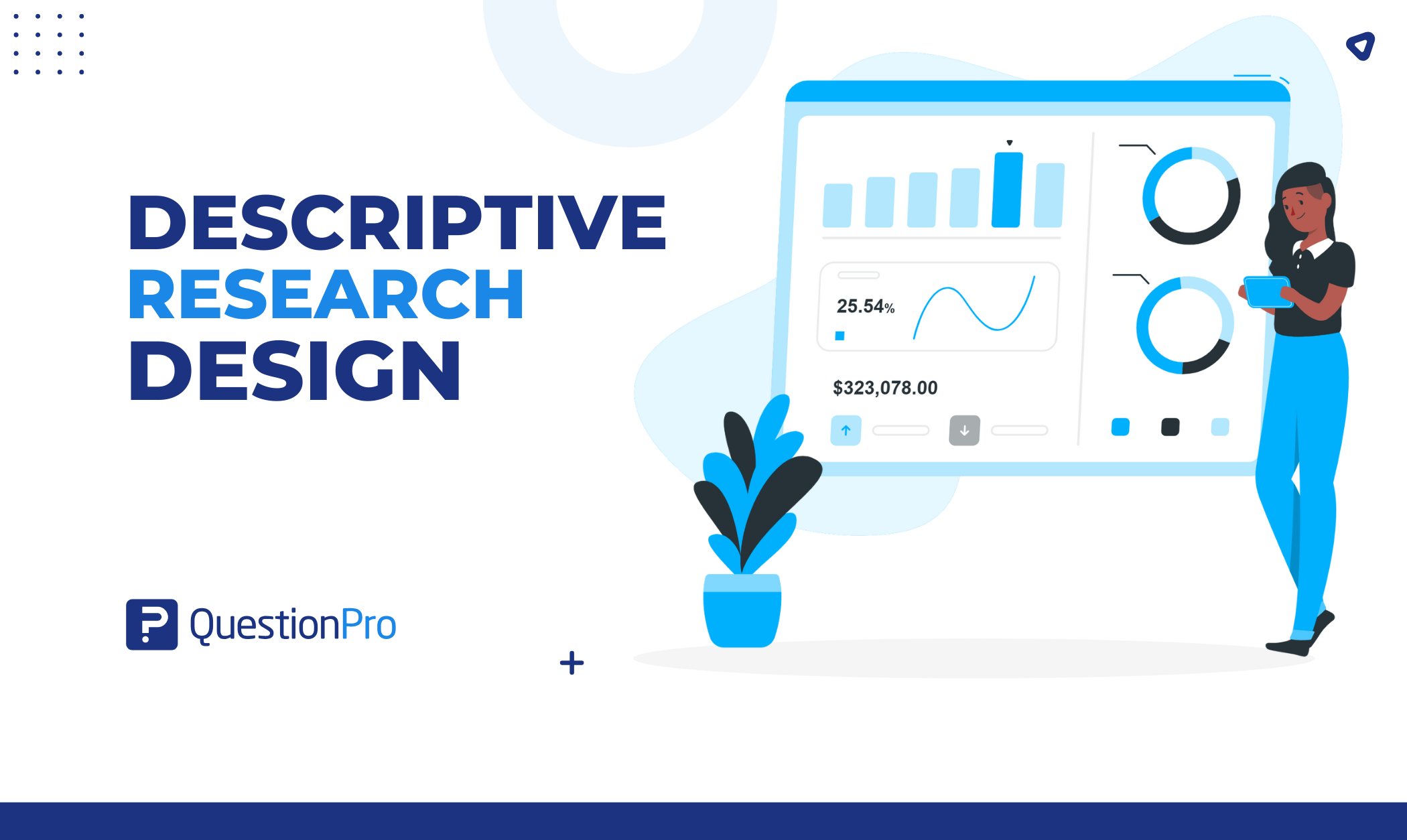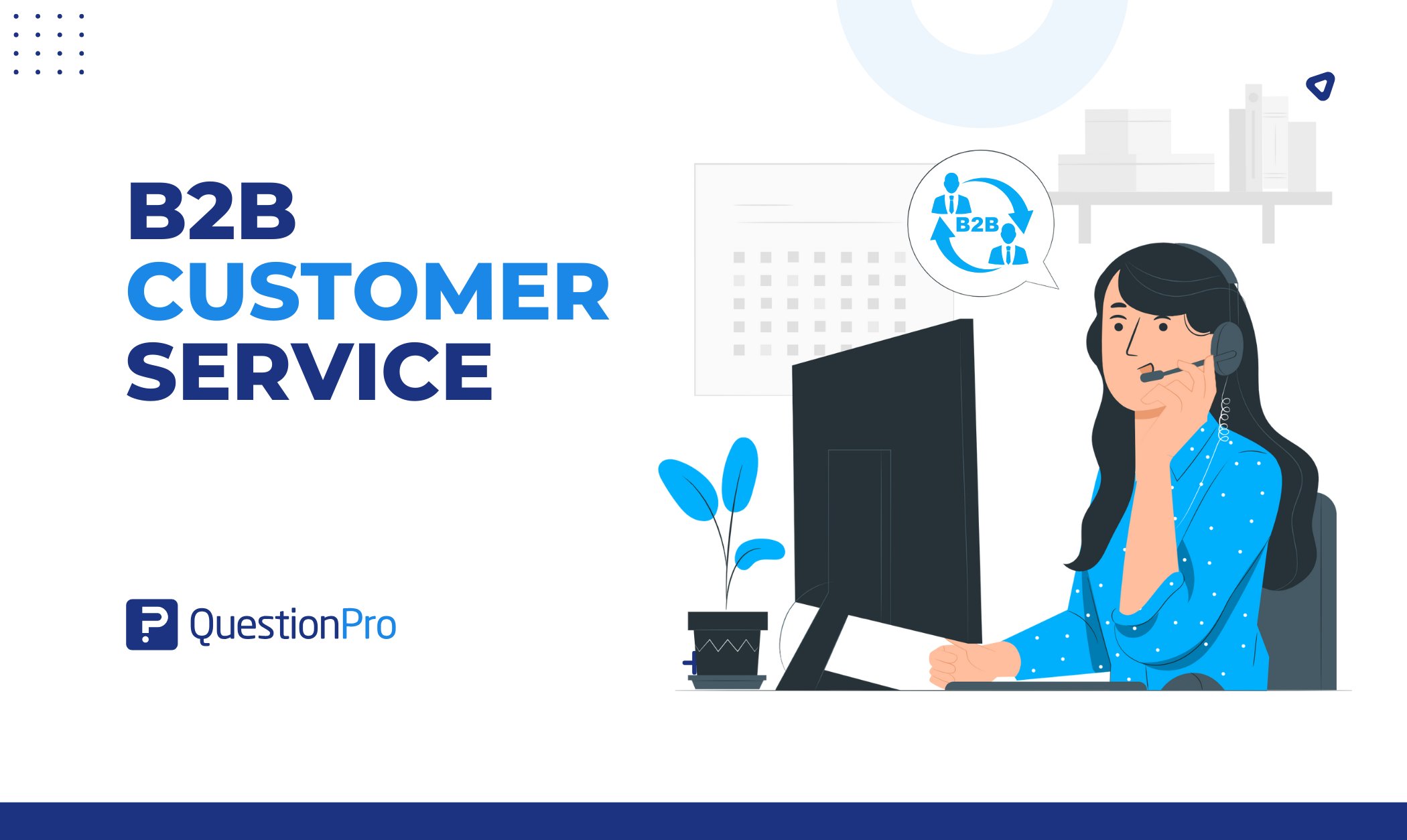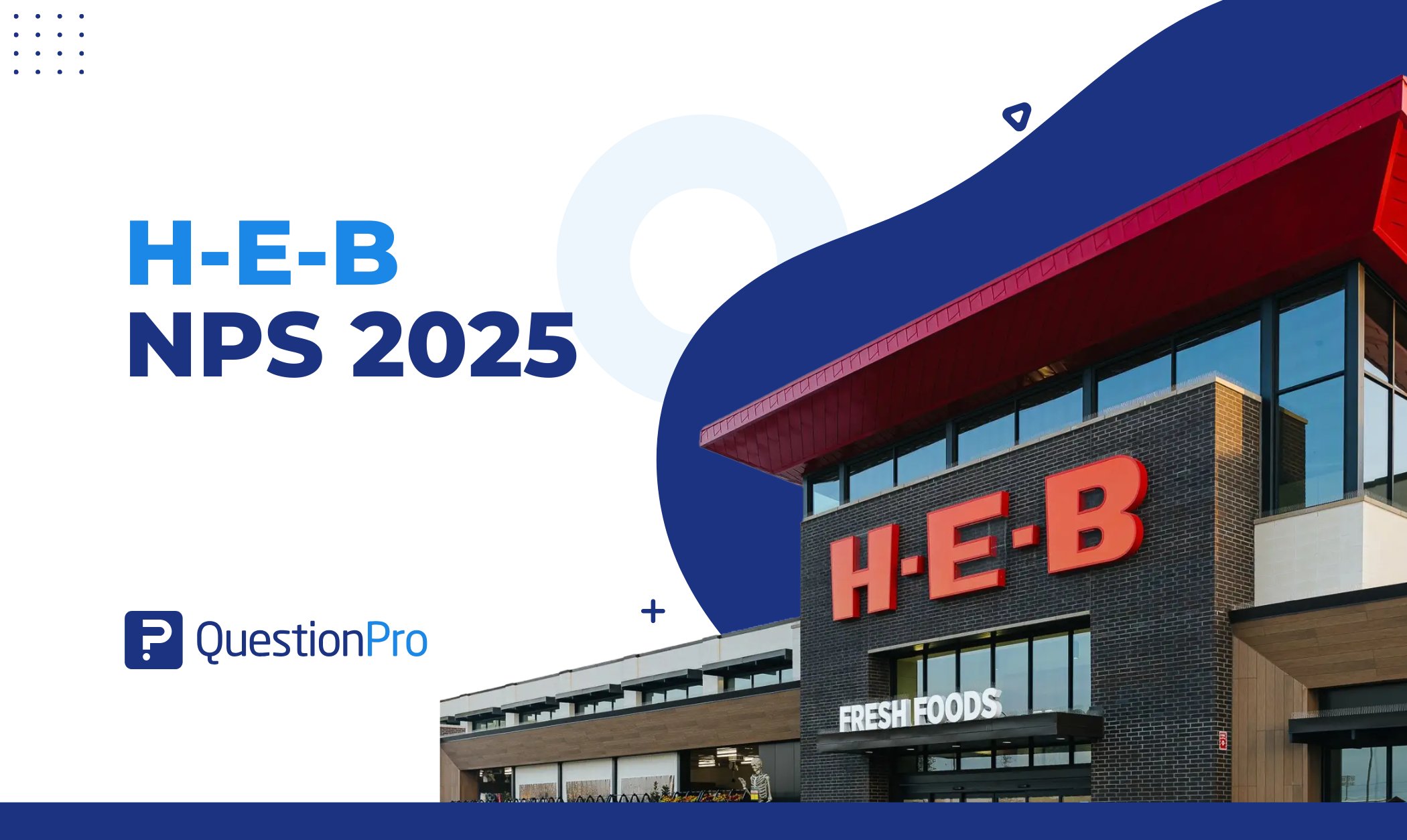
Imagine you’ve had a great experience with a brand—whether it’s your favorite grocery store or a service you use regularly. You walked away feeling happy and thought, “I’d definitely tell my friends about this.” That’s what Net Promoter Score (NPS) is all about—measuring how likely customers are to recommend your business to others.
But why should you care about NPS? Well, it’s one of the simplest ways to get a real sense of customer loyalty and satisfaction. It helps you understand how your customers feel, where you’re doing well, and where you might need to step up your game.
In this post, we’ll look at what NPS is, why it matters, and how companies like H-E-B use it to set themselves apart in the competitive grocery world.
What is NPS?
Net Promoter Score (NPS) is a simple but powerful way to measure how loyal your customers are. It’s used by companies in all kinds of industries—especially in the grocery industry—to get a quick sense of how people really feel about their experience.
It all starts with one straightforward question:
“On a scale of 0–10, how likely are you to recommend us to a friend or colleague?”
Based on the responses, customers are categorized into three groups:
- Promoters (9–10): Loyal advocates who actively recommend the brand.
- Passives (7–8): These customers are satisfied but not vocal about it yet.
- Detractors (0–6): Unhappy customers who may spread negative feedback.
Once you have your responses, you can calculate your NPS score using the following formula:
NPS = % of Promoters – % of Detractors
A high NPS is a good sign—it means customers like what you’re doing and are likely to stick around. A low score? That’s a red flag that something might be off in the customer experience.
But how do you know if your score is actually good? That’s where benchmarking comes in. Comparing your NPS to others in your industry can give you helpful context and show where you stand—and where you might need to step things up.
H-E-B’s NPS Performance
According to QuestionPro’s Q1 2025 Benchmarking NPS and CSAT Report, the grocery industry’s average NPS is 37. However, H-E-B surpasses the industry average with an NPS of 63.
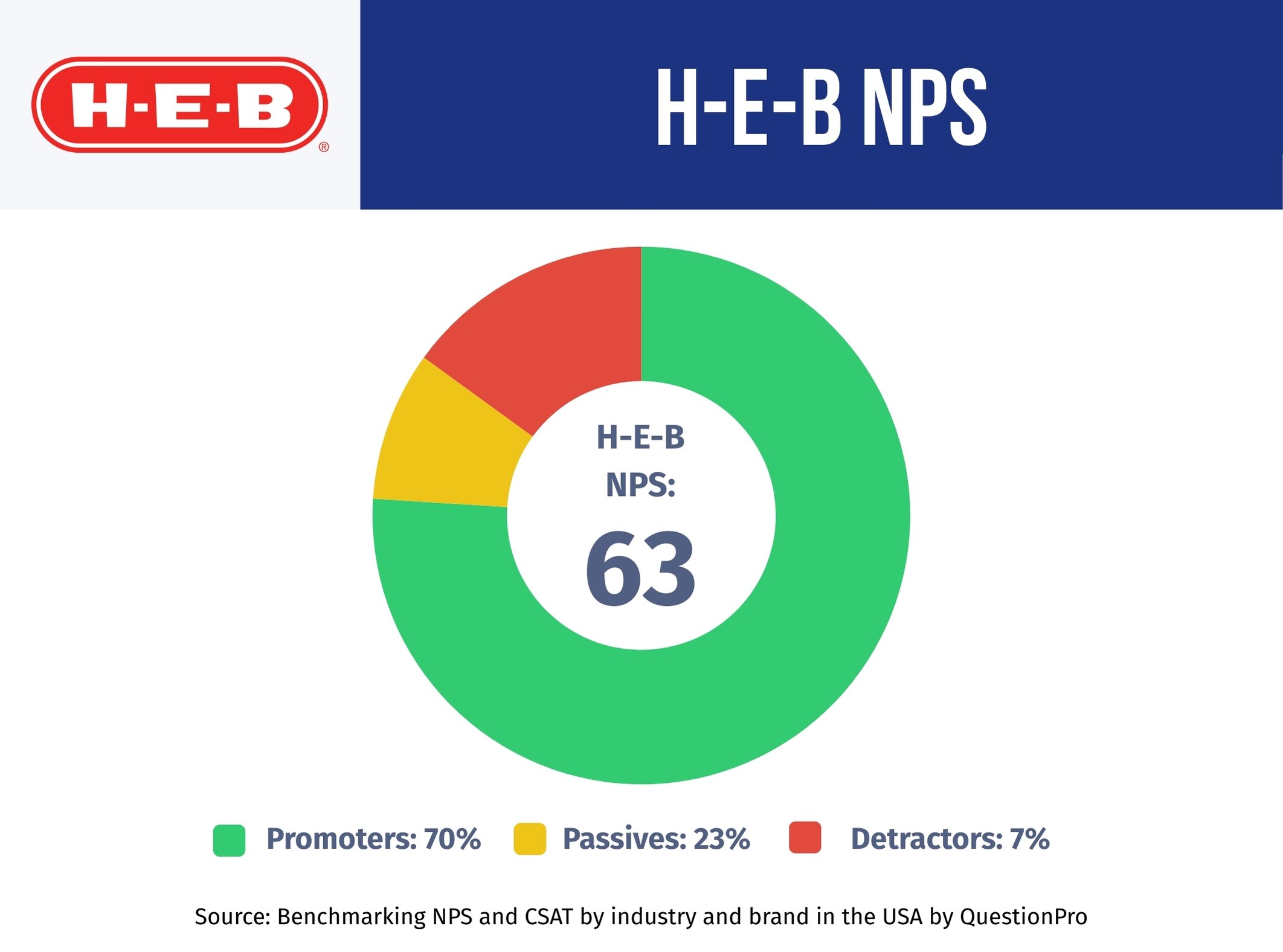
Here is a breakdown of H-E-B’s NPS:
- Promoters: 70%
- Passives: 23%
- Detractors: 7%
Compared to the industry average, H-E-B boasts a higher percentage of promoters and a lower percentage of detractors, indicating strong customer advocacy.
How Does H-E-B NPS Score Compare to Industry Benchmarks?
H-E-B’s NPS of 63 is a notable score in the grocery industry, where the average hovers around 37. While many grocery retailers struggle to exceed that benchmark, H-E-B’s strong customer loyalty sets it apart from the rest.
Its high score reflects a winning combination of quality products, exceptional customer service, and a deep connection to the communities it serves. In an increasingly competitive market, H-E-B outperforms national chains and new digital grocery platforms by consistently delivering on what matters most to shoppers.
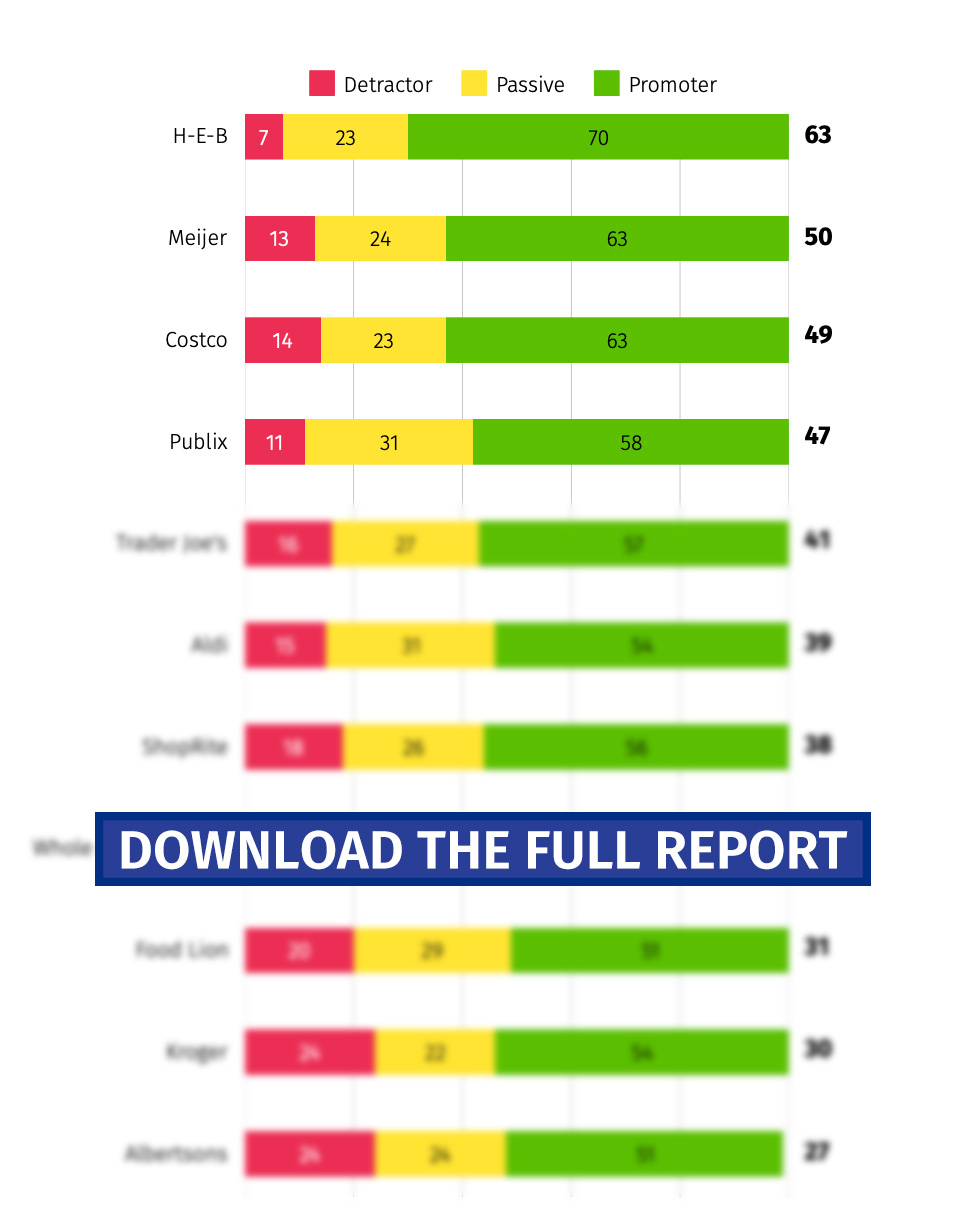
These insights are based on QuestionPro’s latest study, which surveyed 1,000 participants to measure the NPS of various companies and industries. This report reflects real user opinions from Q1 2025 and is updated quarterly.
Customer Testimonials of H-E-B
Customer reviews help explain why H-E-B earns such a high NPS:
The HEB or Central Market brands are often better than name brands, and there is much more variety. HEB brand corn chips, the chili flavored in particular, taste better because they have more seasoning than the name brand chips.
(Reviews sourced from verified users on Trustpilot.)
I had a good time like I always do at H-E-B. They always greet you when you first come in and are respectful at the cash-out registers. Never had a problem with a worker at HEB.
I shop regularly at the Mueller HEB store in Austin, TX, and have never been disappointed by their selections or stock. When I can, I go into the store. If I am too busy to spend time in the store, I pre-order, and they bring my order out & put it into the trunk of my car. They were even stellar during the years of COVID!
These testimonials highlight the key factors behind H-E-B’s strong customer loyalty: product quality, personalized service, reliability, and a seamless shopping experience.
What’s Driving H-E-B’s High NPS?
H-E-B continues to earn strong customer loyalty, scoring an impressive 63 for Net Promoter Score and a remarkable 92 in customer loyalty. But what exactly is behind this strong performance? Let’s look at the factors contributing to high H-E-B NPS.
1. Strong Emotional Connection with Customers
Many customers deeply appreciate H-E-B being “Made in Texas, owned and operated.” This local pride and a consistent shopping experience create a strong emotional bond, especially among long-time Texas residents.
2. Consistent Performance Across Demographics
H-E-B’s NPS varies across customer groups:
- Gender: Female customers rate H-E-B 3 points higher than male customers.
- Ethnicity: The highest NPS comes from Asian or Pacific Islander customers, while the lowest is from those identifying as “Other.”
- Usage Duration: The most loyal customers have been with H-E-B for 2 to 5 years, showing that satisfaction builds over time.
3. High Customer Satisfaction and Service
With a Customer Satisfaction (CSAT) score of 82 and a strong focus on customer service, H-E-B delivers consistently positive experiences—something many testimonials highlight. Several customers mentioned the reliability of finding everything they needed and the professionalism of H-E-B staff.
4. Value for Money in Specific Industries
Customers from Mechanical, Civil, and Industrial Engineering rank H-E-B’s pricing plans and ROI the highest. However, those in Security and Investigations report a lower return on investment, suggesting opportunities for improvement in specific market segments.
5. Voice of the Customer
Real feedback shows how much customers appreciate H-E-B’s availability and product range—though some express disappointment in its limited reach, such as the absence of H-E-B stores in certain Texas cities like El Paso.
How to Measure and Improve Your NPS?
Curious how your company’s Net Promoter Score (NPS) compares to a big grocery company like H-E-B? With tools like QuestionPro, you can measure and improve your NPS easily than you might think.
1. Start with an NPS Survey
Use QuestionPro’s ready-to-go NPS survey template to get feedback from your customers. Include the classic 0–10 scale question and follow it up with an AskWhy question to understand the “why” behind each score.

For deeper insights, try our AskWhy feature. It adds an open-ended follow-up question to gather context on scores.

Get your survey in front of people through SMS, email, QR codes, or direct links. Need a specific audience? Use QuestionPro Audience to target respondents by industry or demographic.
3. See Results Instantly
As responses come in, QuestionPro automatically calculates your NPS and groups customers into promoters, passives, or detractors. The real-time dashboard makes it easy to spot patterns and trends.
4. Take Meaningful Action
Don’t just collect data—use it. Focus on areas where scores are low and take steps to improve the customer experience. The platform’s benchmarking tools help you see how you’re doing compared to others in your industry.
With QuestionPro, tracking and improving your NPS becomes a simple, ongoing process that helps you stay ahead in customer satisfaction.
Stay Ahead with the Latest NPS Insights
Get the Q1 2025 NPS Benchmark Report and discover how leading brands are keeping their customers loyal.
Looking to improve your NPS? Contact the experts at QuestionPro for personalized guidance on measuring and improving customer satisfaction.





